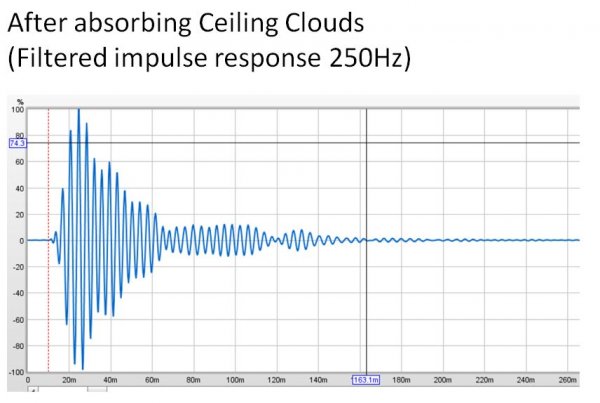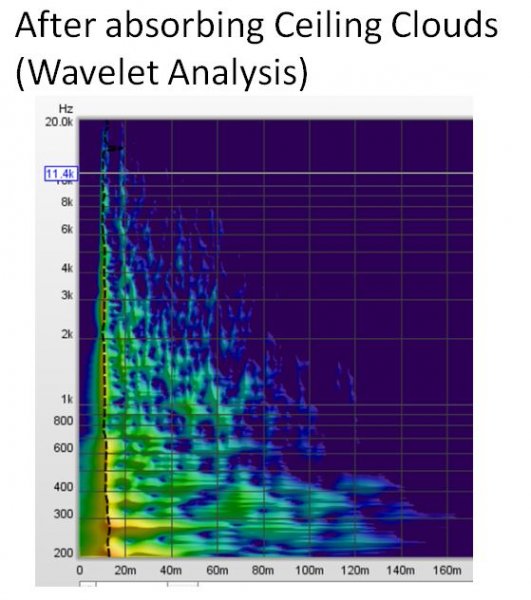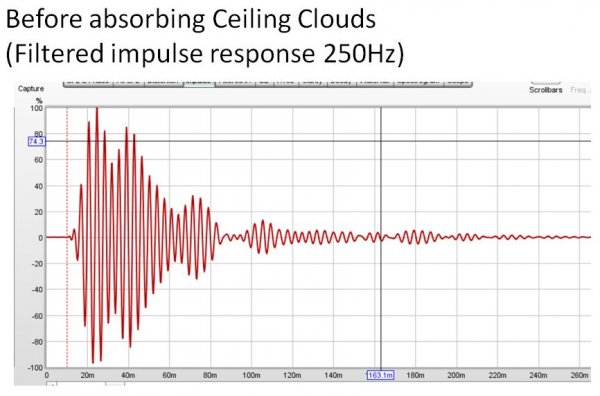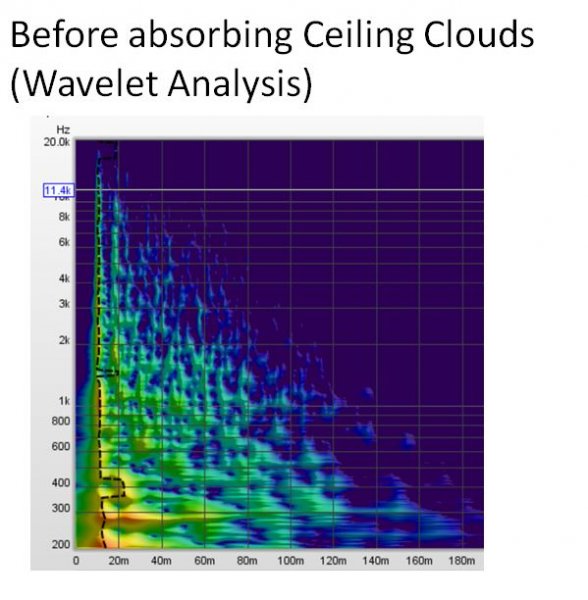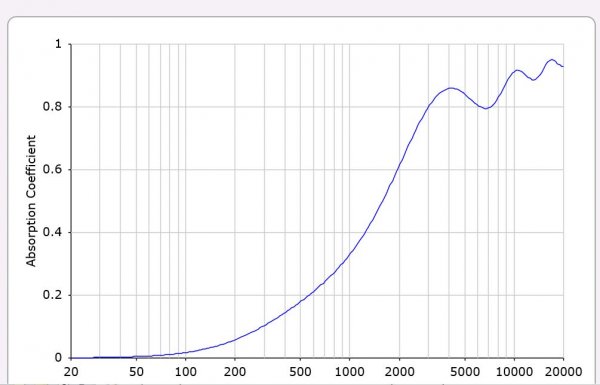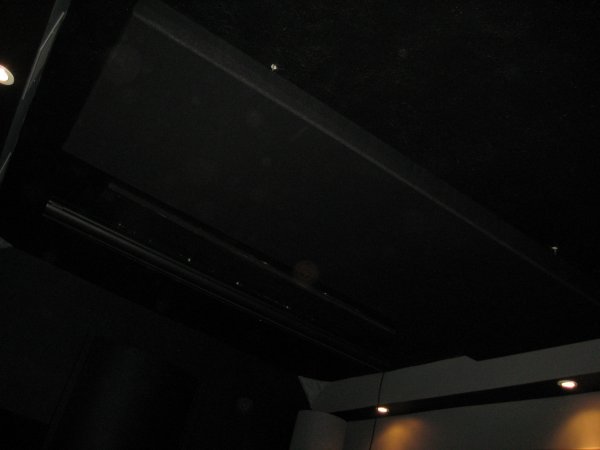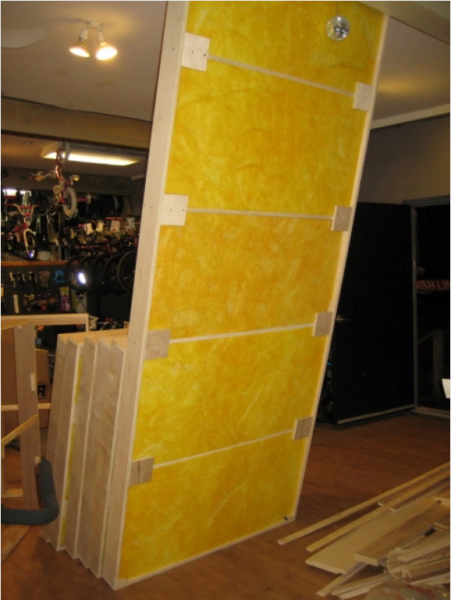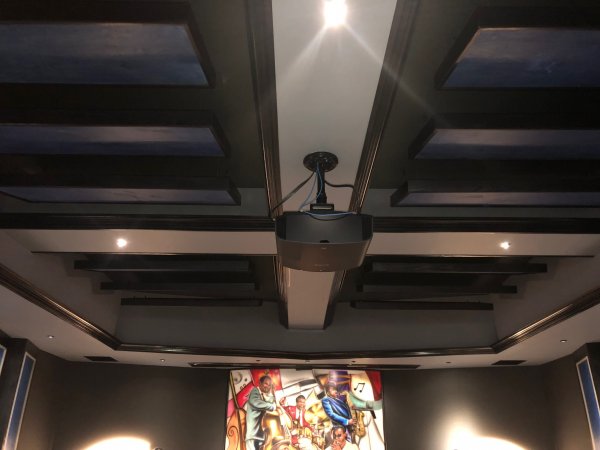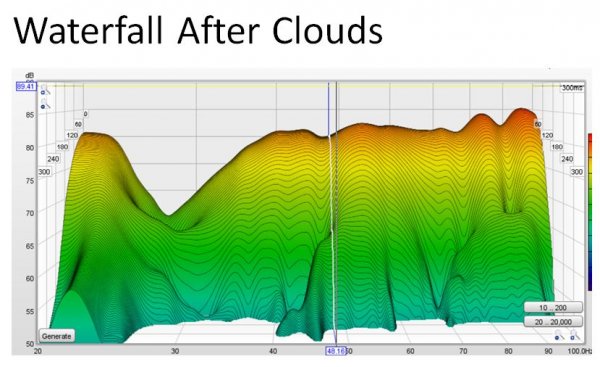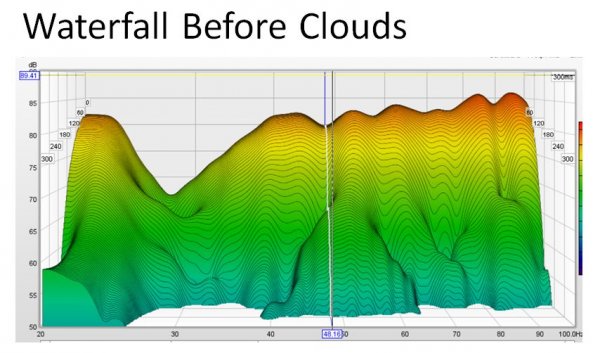Hello all,
I met Tom at LSAF this year. (I was the OCD person with the blanket stuck to the door with magnets to suppress the first reflection point.). We had a discussion about ceiling clouds and their effectiveness. He asked how I knew what they did and I didn't have a good answer since I never measured my room without them in place. When I built my room I suspended 5/8" plywood angled panels per plan from Rives much like what many of you have seen in Mike L's room. I could see the general idea of having multiple ceiling heights spreads out peaks and valleys in the frequency response. However, giving this more thought I realized that this was insufficient and better would be absorptive panels hanging from the ceiling. I got six 5'X2' 244 panels with scatter plates from GIK and hung them this last weekend. (Thanks to Scott for the help hanging them). The measurement data is pretty compelling and the listening also bears out the BIG improvement in sonics. I pasted the data below for your perusal.
In the Wavelet plots you can see the weird phase "blips" at 400Hz and 1.5kHz. In the post data these are gone. You can also see the "tree" is much skinnier. The "branches" don't go out as far which means less resonance. In the filtered impulse response it is clear that the ringing at 250Hz is greatly reduced. It is also reduced at other frequency filters. I just give 250 Hz as an example.
For those of you who have not explored ceiling clouds I highly encourage it. The ceiling is free real estate. And if done properly can look good to your non-audiophile spouse.
Thanks,
Todd
I met Tom at LSAF this year. (I was the OCD person with the blanket stuck to the door with magnets to suppress the first reflection point.). We had a discussion about ceiling clouds and their effectiveness. He asked how I knew what they did and I didn't have a good answer since I never measured my room without them in place. When I built my room I suspended 5/8" plywood angled panels per plan from Rives much like what many of you have seen in Mike L's room. I could see the general idea of having multiple ceiling heights spreads out peaks and valleys in the frequency response. However, giving this more thought I realized that this was insufficient and better would be absorptive panels hanging from the ceiling. I got six 5'X2' 244 panels with scatter plates from GIK and hung them this last weekend. (Thanks to Scott for the help hanging them). The measurement data is pretty compelling and the listening also bears out the BIG improvement in sonics. I pasted the data below for your perusal.
In the Wavelet plots you can see the weird phase "blips" at 400Hz and 1.5kHz. In the post data these are gone. You can also see the "tree" is much skinnier. The "branches" don't go out as far which means less resonance. In the filtered impulse response it is clear that the ringing at 250Hz is greatly reduced. It is also reduced at other frequency filters. I just give 250 Hz as an example.
For those of you who have not explored ceiling clouds I highly encourage it. The ceiling is free real estate. And if done properly can look good to your non-audiophile spouse.
Thanks,
Todd













